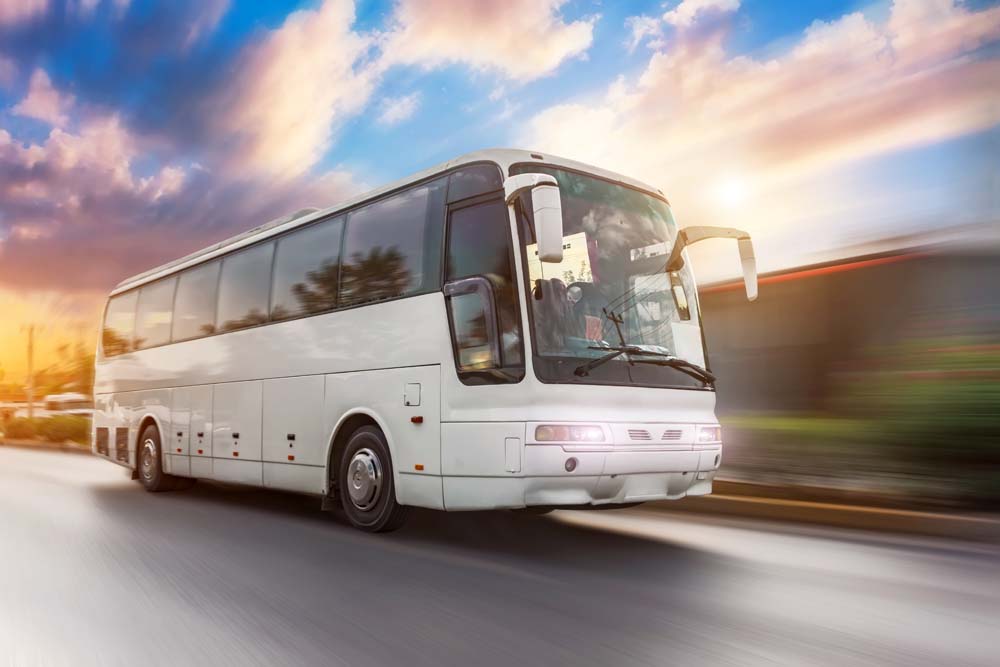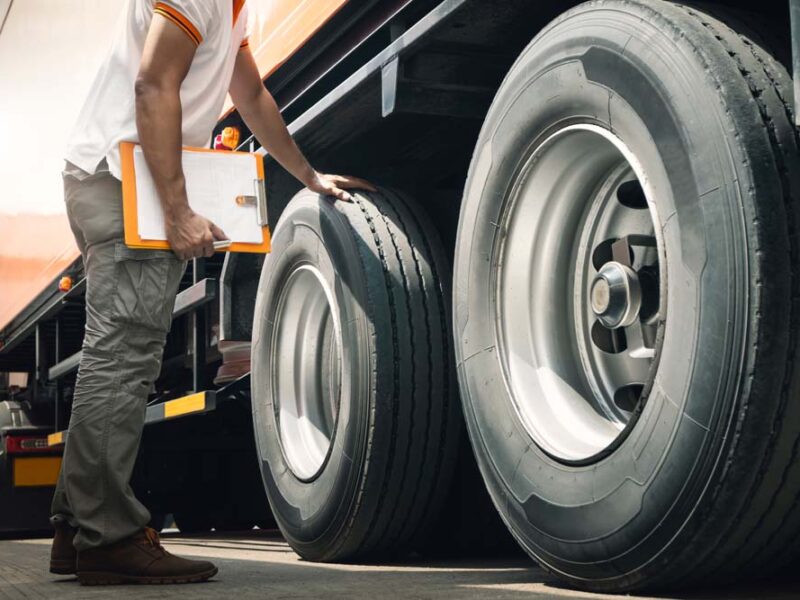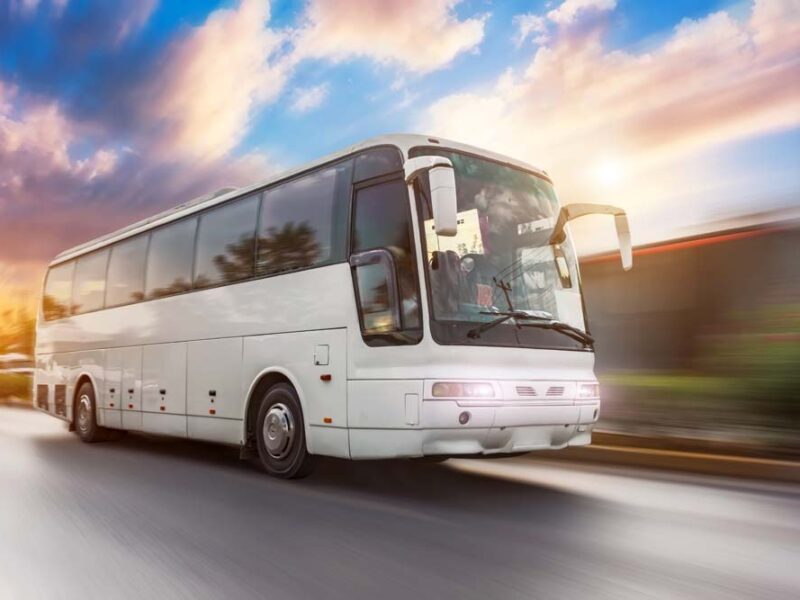As has been widely reported in the recent trade press, 1st January 2020 is a date which looms large on the horizon for coach operators: this is the date that the final provisions of the Public Service Vehicle Accessibility Regulations 2000 ("PSVAR") - which relate specifically to coaches designed to carry more than 22 passengers registered before 2000 - take effect. These provisions are likely to affect a number of operators using older coaches for certain journeys - in particular, home to school transport provision.
By way of a whistle-stop reminder: PSVAR is a piece of legislation which prescribes accessibility requirements for public service vehicles. Since the regulations' inception in 2000, the general position has been that all new buses and coaches designed to carry more than 22 passengers used on local or scheduled services have been required to be fully accessible in accordance with the terms of the regulations.
Initially, vehicles which were manufactured before October 2000 were exempt, but the legislation was drafted in such a way as to allow for a staged roll-out for older vehicles, with different categories of vehicle being captured by the requirements of the regulations from a series of set dates. 1st January 2020 is the last of those dates, and older coaches are the last vehicles to be brought in-scope.
The Accessibility Requirements Themselves
Once the application of the regulations can be established, the accessibility requirements themselves are relatively straightforward, albeit subject to detailed technical specification. From 1st January 2020, all affected coaches in use will require certificates confirming conformity to the provisions of both Schedule 1 and Schedule 3 of the Regulations. Schedule 1 deals with wheelchair accessibility requirements, while Schedule 3 deals with more general accessibility requirements including, among other, specifications for seats, steps, floors/gangways and handrails.
Application of PSVAR to Coaches - Local and Scheduled Services
As above, the starting point is that for the purposes of the regulations, a "coach" is defined as a public service vehicle designed and constructed to carry more than 22 seated passengers: so coaches designed to carry 22 or fewer passengers are always exempt.
A vehicle to which the regulations apply is said to be "used" or "in use" when being used to provide either a local service or a scheduled service.
A "local service" is defined as in the Transport Act 1985; in short, the carriage of passengers at separate fares, unless (in simple terms) stops are 15 or more miles apart, or unless the service meets the condition of Part III, Schedule 1 of the Public Passenger Vehicles Act 1981 (i.e. comprises of a trip organised privately by persons acting independently of vehicle operators). Vehicles operated under Section 19 permits are exempted in this definition (but in fact are specifically exempted by PSVAR in any case).
A "scheduled service' means a service for the carriage of passengers at separate fares along specified routes, at specified times, with passengers being taken up and set down at pre-determined stopping points, with the exception of tours (i.e. a service in which the vehicle is used for carrying passengers to a location or numerous locations and then back to the departure point).
To complete the picture, the regulations provide a list of further exemptions: in addition to vehicles operated under section 19 permits, there are specific exemptions for off-road vehicles, vehicles designed for carrying the sick and injured, prisoner vehicles, and government or Crown vehicles. Perhaps of most relevance to coach operators is an exemption which applies to coaches which were first used on a road more than 20 years ago and which are not used to provide a local or scheduled services for more than 20 days in a year.
Those legal definitions and exemptions in themselves do not necessarily cause trouble until one begins to consider their application to practical situations - in particular, what is meant by "separate fares". And therein lies the problem for operators, and the root cause of the concern widely reported in recent trade press.
Separate Fares
In basic terms, a fare is any payment which is made for matters including the right to be carried on a vehicle - whether directly or indirectly, and no matter who the fare is paid to. For example, students of a private school for which the fees paid include a home to school transport provision (even where a payment explicitly for transport is not made) undoubtedly would be viewed as paying separate fares.
School Transport
The issue most likely to affect operators is whether the provision of home to school transport will be defined as a local or scheduled service. Again, this may turn on whether separate fares are charged.
The general position is that where transport is provided to the user free of charge (which is the case for a number of schoolchildren who are eligible for free travel), then the regulations do not apply. However, it is not uncommon for local authorities to sell spare seats on vehicles to fee-paying passengers. Where this is the case, a separate fare is paid, thus the journey will fall in-scope (assuming that the other features of the journey make it a local or scheduled service - which, for many home to school journeys is likely to be the case). It only requires one passenger paying a separate fare to require the vehicle to comply with the regulations.
There is a school of thought suggesting that a home to school service could be described as a "tour" given that, in the course of a day, passengers are taken to a specific location and returned to their point of departure (and as above, tours are exempt) - but this has yet to be tested by the courts, and operators would be well advised not to seek to rely on this interpretation - a court is likely to conclude that this plainly was not the intention of the regulations.
Options for Operators and Local Authorities
First and foremost, operators need to know whether journeys are in-scope or not, which means knowing whether end-users are being charged separate fares - this is especially the case for local authority home to school service provision. As soon as any passenger is paying a fare (directly or indirectly), the regulations will apply, and operators need to be sure that they are informed of passengers' fare-paying arrangements by local authorities.
Operators may be in a position to rely on one of the specified exemptions from the regulations. Using a fleet of smaller coaches with 22 or fewer passenger seats would obviously achieve this (though in practice, this is likely to be impractical). Ensuring that vehicles first used over 20 years ago are not used on more than 20 days per year for local or scheduled services is another - albeit that given the nature of home to school transport, such infrequent use is unlikely to be possible.
For local authorities, offering free home to school transport across the board - even where children are not automatically eligible - is one theoretical resolution which will mean operators they contract with can continue to use non-PSVAR compliant coaches, but plainly this is a resolution that is unlikely to be commercially viable.
Where the regulations do apply, operators will realistically be left with two options: ensuring that coaches not captured by the regulations prior to 1 January 2020 are compliant with the accessibility requirements from that date (which in many cases may mean either costly retrofits or replacing vehicles) - or else switching coaches for already-compliant buses for all local or scheduled services where separate fares are paid.
Ultimately, of course, the regulations are intended to ensure equality of access for public service vehicles. Reputationally speaking, there is of course much to be said for ensuring that your vehicles are compliant.
If you need any further advice or assistance with this issue then please call us on 01279 818280 or click here to send an email.
(C) Richard Pelly - first appeared in Croner-i Passenger Transport, December 2019.

More News and Insight

Social Media – Have you Thought about your Employees’ Use?
Social Media is all encompassing in the modern world, but although it brings many positives, it can place employers in vulnerable positions if their employees’ use is not carefully defined…

Changes to the Clandestine Entrant Civil Penalty Scheme means a Stitch in Time Really Does Save Nine!
The Clandestine Entrant Civil Penalty Scheme has been in place for over 20 years. It is designed to complement law enforcement activity against criminals who smuggle people into the UK illegally as well as deter those who decide to try to enter the country without permission…

Driving in the UK? Read about the latest Rule Changes in 2024
Earlier this year various new driving laws were introduced, impacting both standard road users as well as HGV and PSV road users across England, Wales & Scotland. If you are driving in the UK, especially if you are a commercial driver, then you should ensure that you are aware of these amendments and new rules…

Self-Driving Cars on UK Roads to be Reality by 2026
It seems that one of the first areas that will be breaking the ground in the AI revolution into most people’s everyday lives will be Self-Driving cars! Of course we have heard all this before, and more than once!

Are You Taking your Responsibilities to Maintain your Vehicles Seriously?
Running a haulage business is not an easy undertaking. There are a multitude of decisions to be made on a daily basis before any driver actually gets behind the wheel and delivers the goods (or passengers!).

Update to the Guide to Registering & Operating Local Bus Services in England & Wales
The Senior Traffic Commissioner’s guide to registering and operating local bus services in England and Wales is intended to help operators of local bus services understand the requirements for registering a service.

Changes to the HGV & PSV Test Regime for Earned Recognition Operators
In March 2021 the Government began a review into the processes for commercial vehicle testing to look at ways it could improve the regime for operators whilst still maintaining high safety standards for any vehicle used commercially on the UK’s roads.

Employment Law Updates for 2024
The Government has confirmed several legislative employment law changes to be implemented 2024, which aim to bring about a “fairer workplace for employees”.

Campaign to Bar Schools from using Section 19 Permits
In March 2024 a campaign was started to end the operation of minibuses by schools and colleges under Section 19 permits.

Moving to a Digital First Approach in Heavy Vehicle Testing
The DVSA has published an update to their digital transformation project for heavy vehicle testing. The update is for the new Manage Your Vehicle Testing (MyVT) digital service across vehicle testing.

Traffic Commissioner Highlights Abuse of Section-19 Permits
In a Section 19 Public Inquiry hearing heard last year (2023) the Traffic Commissioner highlighted again the importance of permit operators ensuring that their vehicles allow passengers and other road users to be safe.

Enero Logistics Ltd – the Law for Operators on Agency Drivers
At one time or another, many transport companies need to rely on the services provided by agency drivers, to best cope with sudden fluctuations in demand or to fill driver shortages. This allows for the undisrupted continuation of services by these organisations.
